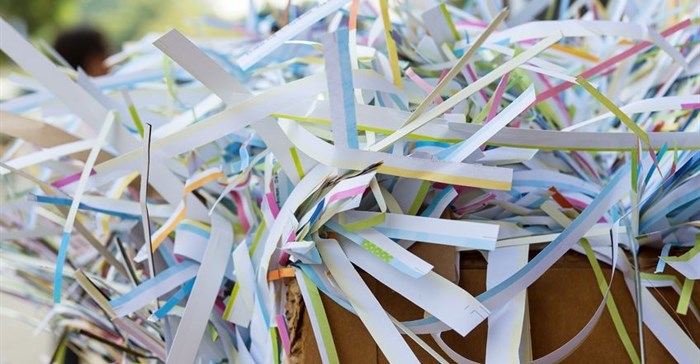






This means that over the past decade, paper recycling in South Africa has improved by almost a third, and puts the country well ahead of the global average of 57.9% (International Council of Forest and Paper Association – ICFPA, 2015).
In the context of this local increasing trend, Mpact processed in excess of 500,000 tonnes of paper and plastic bottles in 2015. The shift is not accidental. Mpact has made substantial investments when it comes to recycling ultimately to expand its own collections of paper and plastic, and to increase recycling rates of these materials in South Africa.
The aim of the various Mpact Recycling initiatives is to increase the material available for the Felixton mill, for Mpact Polymers and for the recently commissioned liquid-packaging recycling plant at the Springs paper mill. Once completed the R765m Felixton mill upgrade will replace bagasse fibre with recycled fibre; and the mill’s capacity will increase by 60,000 tonnes per annum, with a total capacity of 215,000 tonnes per annum. The R350m investment at Mpact Polymers will see the plant processing up to 29,000 tonnes per annum of PET bottles – to be made back into new PET bottles for the beverage industry. Finally, the liquid packaging pulping equipment at Mpact’s Springs mill will process approximately 25,000 tonnes per annum of cartons, sacks and bags, and cups. All of these equating to a very real need for recyclables including paper packaging, PET bottles and milk and juice cartons.
“The growth in paper recovery rates is a promising trend for the country because of the environmental benefits. Recycling lessens the impact on already pressured landfill sites since the need for landfilling is avoided,” says John Hunt, MD Mpact Recycling. According to PRASA one tonne of recovered paper saves three cubic metres of landfill space.
“By recycling we are slowing the need for new landfill space and extending the lifespan of landfills. Cutting the amount of waste going into landfill reduces the cost to municipalities of acquiring additional landfill sites,” says Hunt.
While the global recycling average has increased by just 1.5% over the past four years (ICFPA: 2011 to 2015), South Africa’s rate has increased by 7%. It is therefore an accolade that South Africa ranks firmly among the developed market rates, even though it does not have the same ease of recycling for the everyday consumer that exists in developed countries, such as recycling bins in malls, walkways and substations.
“In South Africa, we still have to go out of our way to recycle, making it harder to improve the country’s recycling rate; however, we are getting there through programmes such as the Ronnie Recycler schools and kerbside programmes,” continues Hunt.
South Africa’s rate of 66% of recoverable paper and cardboard recovered for recycling compares well with the UK’s rate of slightly over 65%, and the European average of 72%, according to ICFPA. The European Recovered Paper Council (ERPC) indicates that the recycled amount of paper is 1.5 times higher than in 1998. According to the American Forest & Paper Association, 66.8% of paper consumed in the US was recovered for recycling in 2015. Its annual paper recovery rate has nearly doubled since 1990 and the industry has set its paper recycling goal at 70% by 2020.
Developing countries, and even many developed countries, do not perform as well, such as Brazil at 47% and China at 44.7%. An article in The Hindu Times puts the level of recovery and utilisation of waste paper by paper mills in India at 27% of the total paper and paperboard consumed.
The world’s top performer is Australia at an astounding 85%, “a figure which suggests there is still so much more we can do in South Africa,” concludes Hunt.